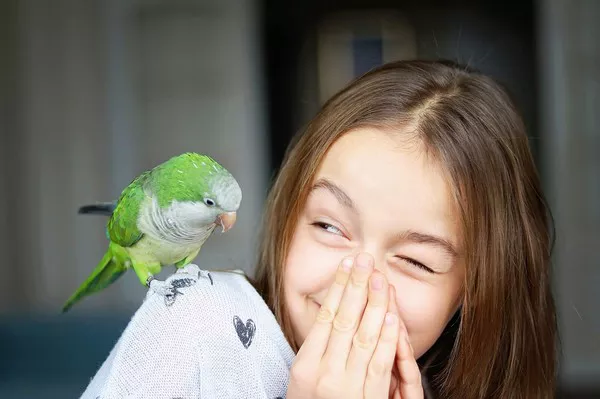Bearded dragons are beloved reptilian pets known for their unique appearance and relatively mild temperament. These fascinating creatures, native to Australia, have become increasingly popular in the world of exotic pet ownership. However, even the most docile bearded dragons can sometimes exhibit signs of fear or anxiety. As a responsible pet owner, it’s essential to understand what causes these reactions. In this article, we will explore five common reasons why your bearded dragon may be scared and how you can help alleviate their fears.
What are bearded dragons scared of?
Sudden Movements and Loud Noises
One of the primary factors that can cause fear in bearded dragons is sudden movements and loud noises. Bearded dragons are known for their calm and slow-paced behavior. In their natural habitat, they are accustomed to a quiet and relatively peaceful environment. Therefore, when they are exposed to sudden movements or loud noises, it can trigger their stress response.
In captivity, bearded dragons are typically kept in a relatively stable and quiet environment. However, if you have children or other pets in the house, their sudden movements and loud play can be a source of stress for your pet. To alleviate this fear, ensure that your bearded dragon’s enclosure is located in a peaceful part of your home, away from high-traffic areas. Also, educate family members about the importance of maintaining a calm environment around your pet.
Handling and Overstimulation
Bearded dragons are generally amiable creatures, but they do have their limits when it comes to human interaction. Overhandling or excessive stimulation can be another reason for their anxiety. If you or your family members frequently pick up and handle your bearded dragon, it may lead to stress and fear.
To prevent this, limit the duration and frequency of handling. Bearded dragons need their space and rest. It’s essential to recognize their body language – if they puff up their beard, darken their color, or open their mouth when being handled, these are signs of discomfort or fear. It’s crucial to respect their boundaries and give them time to relax in their enclosure.
Inadequate Habitat and Temperature Fluctuations
What are bearded dragons scared of when it comes to their habitat? Bearded dragons require specific environmental conditions to thrive. Inadequate habitat and temperature fluctuations can be a source of fear for these reptiles. If your bearded dragon’s enclosure is not set up correctly or if the temperature and humidity levels are not within their optimal range, they may become stressed and anxious.
Ensure that you have a well-designed terrarium with appropriate substrate, heating, and lighting. Bearded dragons need a basking spot with a temperature between 95-105°F (35-40°C) and a cooler area around 75-85°F (24-29°C). Make sure to provide a UVB light source to meet their need for ultraviolet radiation, which is essential for calcium metabolism and overall health.
Unfamiliar or Aggressive Encounters
Bearded dragons, in the wild and captivity, may encounter other animals or new situations that can be frightening. Even if they are not direct prey animals, they are programmed to be cautious and may perceive unfamiliar creatures or aggressive encounters as threats. What are bearded dragons scared of in these situations? It could be other pets in your household, new additions to their enclosure, or even your hand reaching in.
To prevent this fear, it’s crucial to introduce new elements or animals to their environment slowly. Supervise interactions with other pets and make sure that your bearded dragon feels secure. In the presence of other animals, provide hiding spots and elevated basking areas, so they can retreat if they feel threatened. Always monitor their behavior to ensure they are comfortable in their surroundings.
Poor Health or Injury
What are bearded dragons scared of when it comes to their health? Like any living creature, bearded dragons can experience fear and anxiety when they are unwell or injured. If your pet is in pain or suffering from a health issue, it can lead to stress and fear. Common health problems in bearded dragons include respiratory infections, parasites, metabolic bone disease, and injuries.
Regular vet check-ups are essential to monitor your bearded dragon’s health. If you notice any changes in behavior, appetite, or physical appearance, it’s crucial to seek immediate medical attention. A healthy and pain-free bearded dragon is more likely to be relaxed and content.
In conclusion, understanding what causes fear in bearded dragons is vital for their well-being. By recognizing and addressing the factors that contribute to their fear, you can create a safe and comfortable environment for your pet. Remember to maintain a quiet and stable atmosphere, handle your bearded dragon with care, provide an optimal habitat, introduce new elements or animals gradually, and prioritize their health. Your efforts to reduce their fear will result in a happier and more relaxed bearded dragon, making your relationship with your scaly friend even more enjoyable.
Related Topics:
What Not to Feed Bearded Dragons: 10 Things to Avoid
Can Bearded Dragons Eat Cucumbers? Facts & FAQ
How often do i bathe my bearded dragon?


























